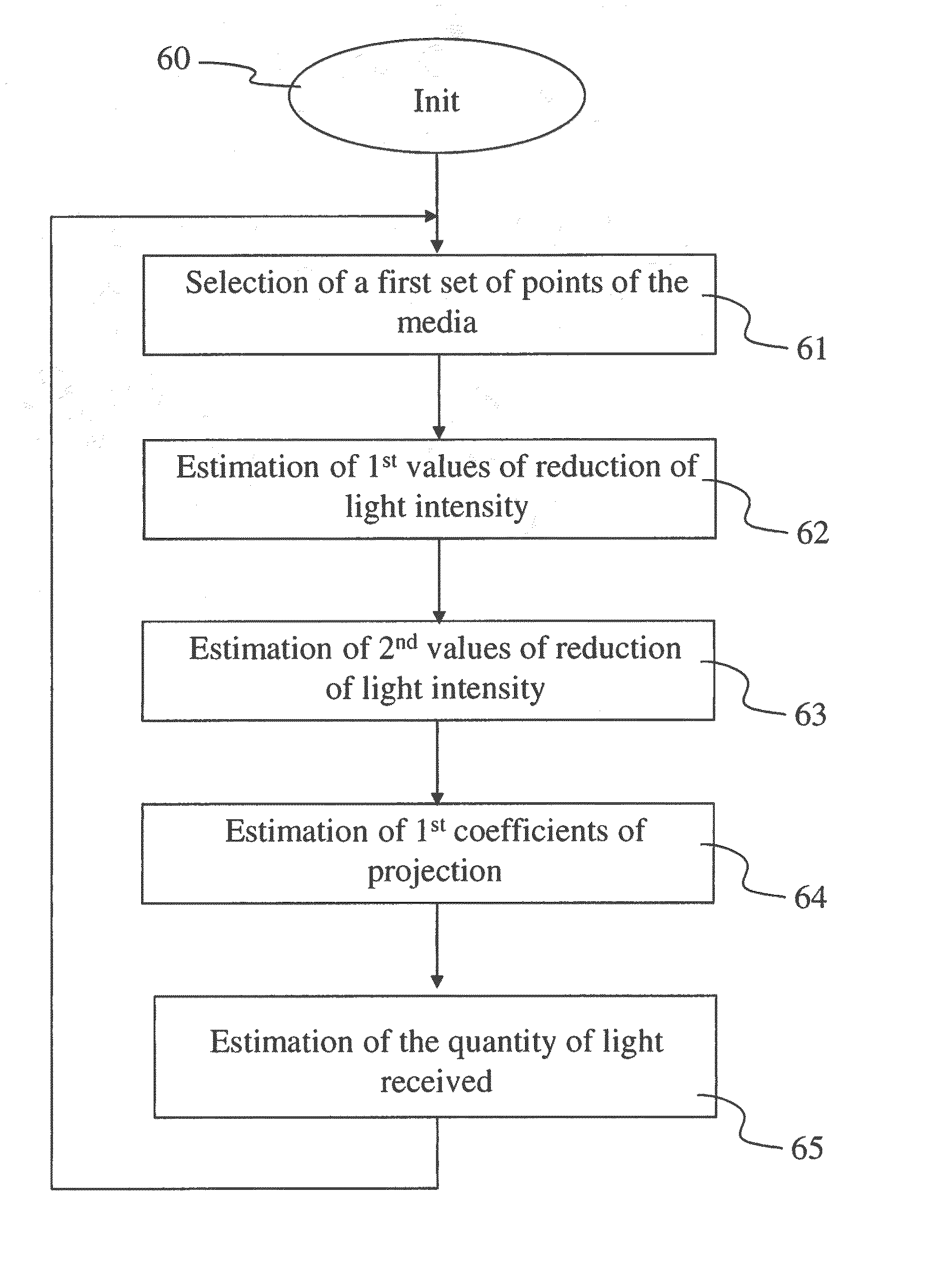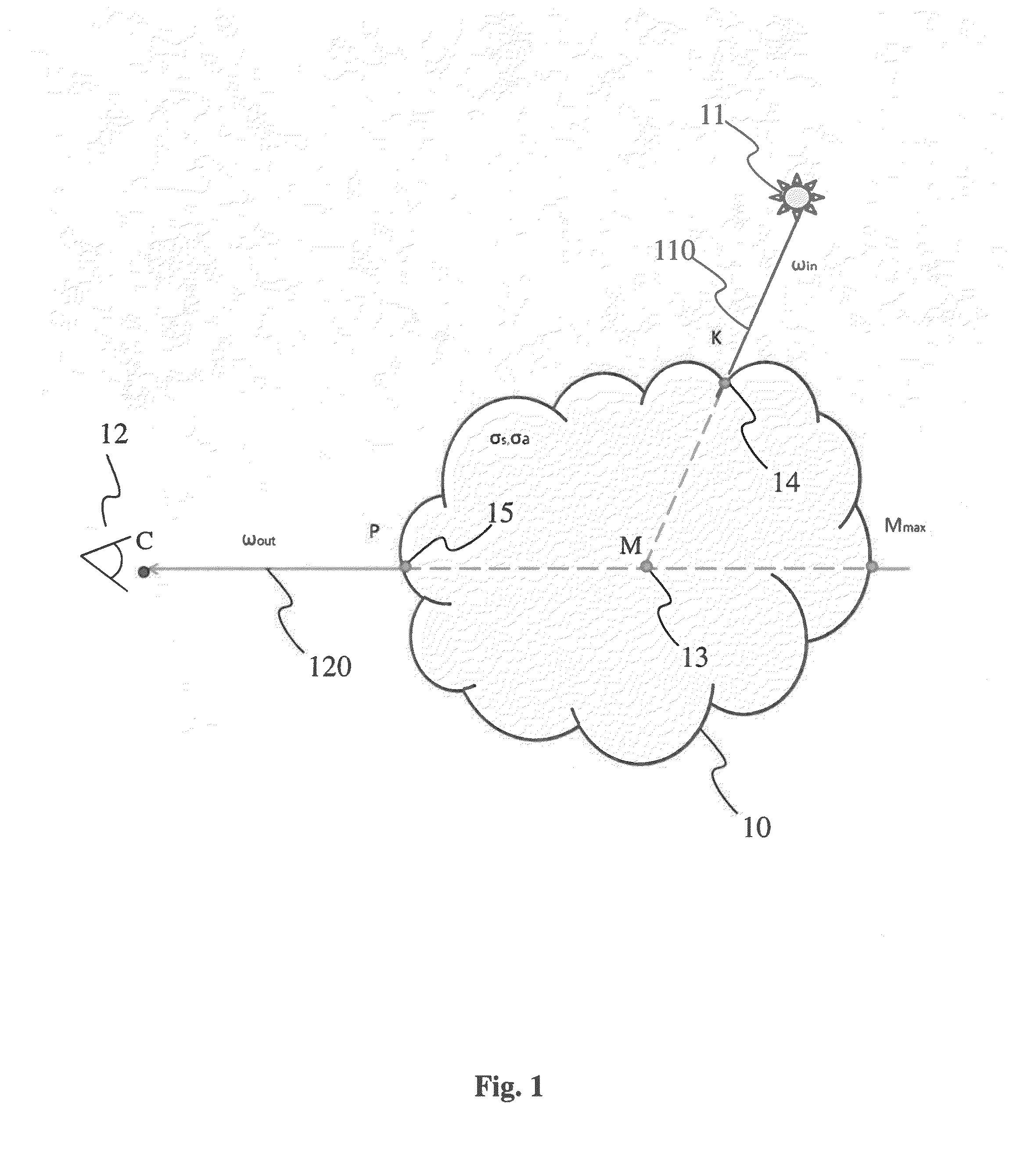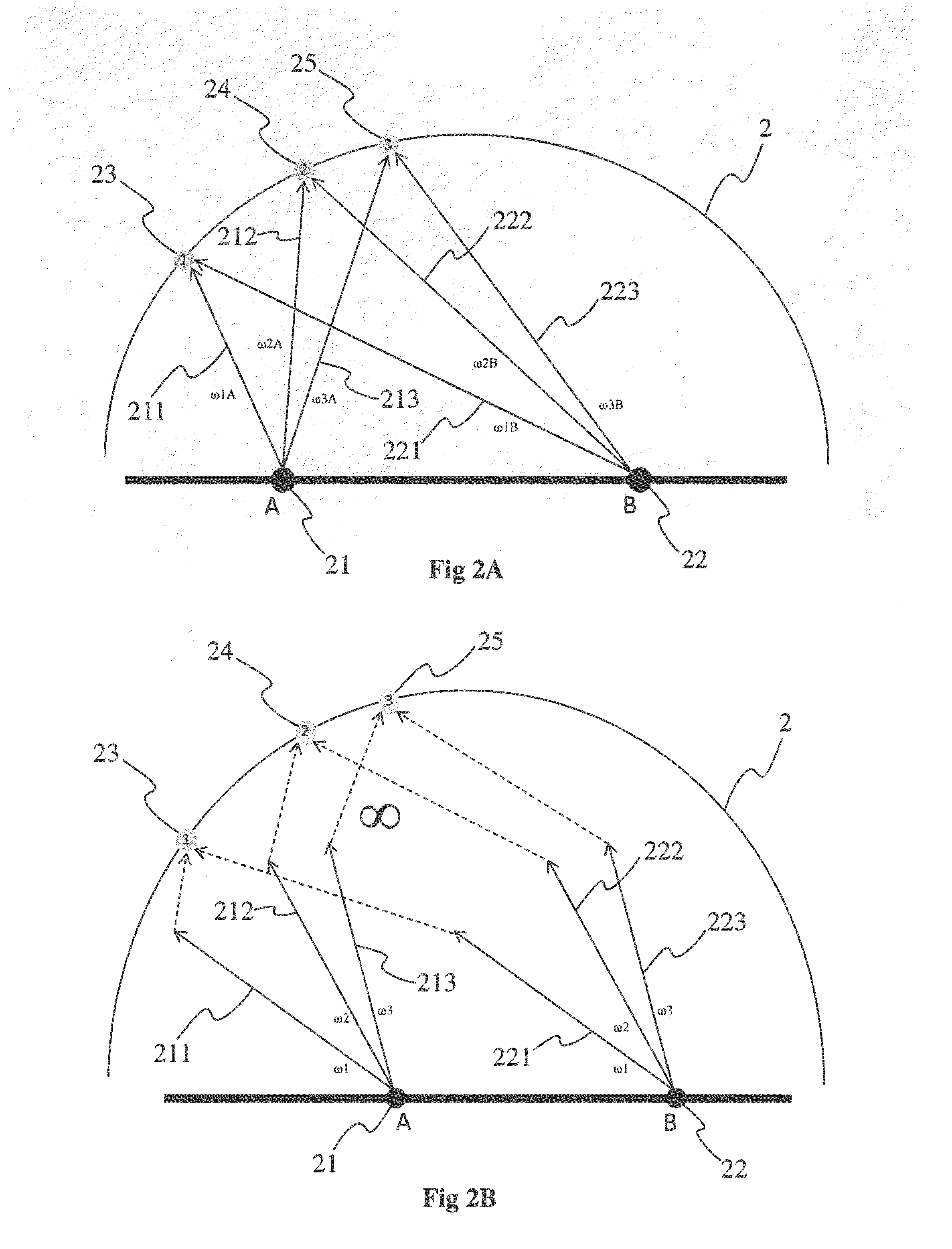Method for estimating the quantity of light received by a participating media, and corresponding device
a technology of participating media and quantity, applied in the field of simulation of the diffusion of light in participating media, can solve the problems of heterogeneous participating media, inability to calculate analytically and live the quantity of light scattered, and high cost of simulation of light in such heterogeneous media
- Summary
- Abstract
- Description
- Claims
- Application Information
AI Technical Summary
Benefits of technology
Problems solved by technology
Method used
Image
Examples
Embodiment Construction
[0041]FIG. 1 shows a heterogeneous participating media 10, for example a cloud, fog or smoke. A participating media is a media, composed of a multitude of particles in suspension, that absorbs, emits and / or diffuses light. In its simplest form, a participating media only absorbs light, for example light received from a light source 11 such as the sun for example. This means that light passing through the media 10 is attenuated, the attenuation depending on the density of the media. The media being heterogeneous, that is to say that the physical characteristics of the media, such as the density of particles composing it for example, vary from one point to another in the media. As the participating media is composed of small particles that interact with the light, the incident light, that is to say received from the light source 11 according to a direction ωin 110 is not only absorbed but it is also diffused. In a participating media with isotropic diffusion, the light is diffused uni...
PUM
 Login to View More
Login to View More Abstract
Description
Claims
Application Information
 Login to View More
Login to View More - R&D
- Intellectual Property
- Life Sciences
- Materials
- Tech Scout
- Unparalleled Data Quality
- Higher Quality Content
- 60% Fewer Hallucinations
Browse by: Latest US Patents, China's latest patents, Technical Efficacy Thesaurus, Application Domain, Technology Topic, Popular Technical Reports.
© 2025 PatSnap. All rights reserved.Legal|Privacy policy|Modern Slavery Act Transparency Statement|Sitemap|About US| Contact US: help@patsnap.com



